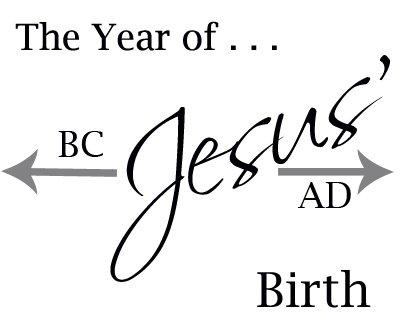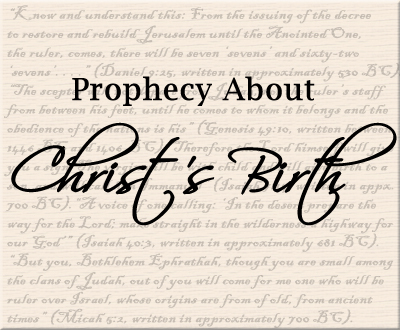Star of Bethlehem
The following text is drawn from our featured Christmas book and is also available for free as audio.
 When the Wise Men appeared before King Herod in Jerusalem, they asked, “Where is the one who has been born king of the Jews? We saw his star in the east and have come to worship him.”
When the Wise Men appeared before King Herod in Jerusalem, they asked, “Where is the one who has been born king of the Jews? We saw his star in the east and have come to worship him.”
Over the centuries, several theories have been proposed to explain this star. Though a single star may have miraculously and spontaneously appeared, it is interesting to consider that God might rather have been orchestrating the heavens over many centuries in order to communicate a unique message about Jesus. It seems reasonable to believe that a combination of signs in the heavens, rather than just a single star, led the Wise Men on their long journey to Jerusalem (and ultimately to Bethlehem) specifically seeking a “king of the Jews.”
Ancient records and astronomy both help to reconstruct the motion of the stars and planets over 2,000 years ago, but before examining some of the signs in the sky, let’s review some of the terms and symbolism present in ancient times.
Astrologers divided the sky into 12 equal blocks through which the sun passed once each year. Each block was named after a constellation and most of us at least know the block or sign under which our birthday falls (Aries, Taurus, Gemini, etc.). These divisions of the sky are still used by modern astronomers to describe positions of the sun and planets.
Pisces is traditionally depicted by two fish and has long been associated symbolically with Palestine, more specifically with the Jews. Some ancient astrologers believed that the 12 zodiac signs represented 12 different countries, and ancient writings refer to Pisces as the “House of the Hebrews.”
Each of the planets also carried symbolic meaning. For example, Jupiter, the largest planet in our solar system, was considered to be a sign of royalty and was known as the “King’s Planet.” In you are familiar with Roman mythology, you know that Jupiter was the supreme god and king.
Saturn, the second largest planet in the solar system, was considered to be a sign of protection and prosperity. In Roman mythology, Saturn was the god and protector of the harvest. Interestingly, among the Jews, Saturn held messianic implications — an old Jewish saying asserted that God had created Saturn to shield Israel.
Now let us consider some of the signs in the sky preceding the birth of Christ (which most scholars place in 5 BC).
(1) Sign #1 (Conjunctions): In the year 7 BC, Jupiter and Saturn passed each other on three different occasions in the zodiac block of Pisces.
If the Wise Men sought to interpret celestial events, they could surmise that some imminent royal event was about to take place in Palestine that would bring protection and prosperity.
(2) Sign #2 (Planetary Massing): In the year 6 BC, Mars joined Jupiter and Saturn in the constellation of Pisces. Mars was a sign of war in many cultures — perhaps because the red appearance of the planet invoked thoughts of blood and combat. In Roman mythology, Mars was the god of war. This sign may have led the Wise Men to believe that the coming King of the Jews would bring both prosperity and war (or some kind of bloodshed).
(3) Sign #3 (Planetary Pairing): In 5 BC, two different pairings took place in Pisces. The moon passed close to Jupiter in the sky and sat just east of another pairing, Mars and Saturn in the constellation of Pisces. This combination would surely affirm for the Wise Men that important activity was taking place, or about to take place, in Palestine.
(4) Sign #4 (A Nova): After observing a series of significant astronomical events, the Wise Men probably looked intently for a final confirmation of the message they had witnessed in the heavens. The finale occurred in March of 5 BC. Chinese records make note of a star that was visible for more than 70 days. This length of visibility indicates that it was a brilliant nova (a star that suddenly increases in brightness). The Wise Men undoubtedly would have interpreted a bright new star in the heavens to mark the birth of a king. Understandably, this final sign would have started the Wise Men packing for Jerusalem.
In the words of astronomer Mark Kidger, “we find a series of events so unique that they can happen together only once in every several thousand years.” One has to take pause to consider the message of the heavens. May our response be like that of the Wise Men who sought out Jesus despite the certain obstacles they would have faced in traveling to Palestine, who willingly gave him their riches, and who humbly bowed down to worship him!
Back to Main Christmas Symbols Page.
We welcome your questions and feedback. If you are seeking information on the Star of Bethlehem that is not found on our website, please contact us.
This content has a copyright © 2008 by Angie Mosteller. Please cite the source if you use this material: http://www.celebratingholidays.com/?page_id=1592.






